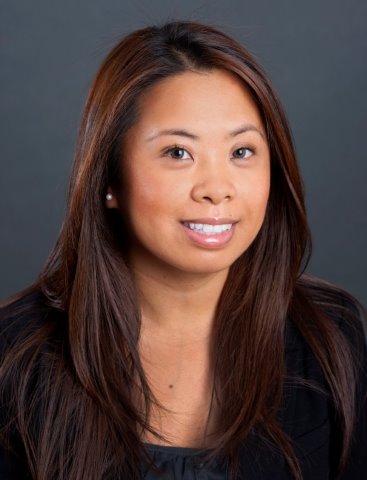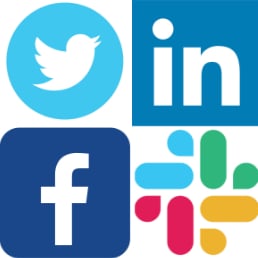...
How would you like to be a Guest Blogger for KMI? Email us at: info@kminstitute.org and let us know your topic(s)!
The Magical Art of Tidying Up Content
If you have Netflix, you’ve probably seen Tidying Up pop up on your feed. It’s a new series based on Marie Kondo’s book The Life-Changing Magic of Tidying Up, which presents her methodology for clearing your clutter, getting organized, and creating space for only the things that still and will continue to serve you and “spark joy” in your home. The Konmari method for tidying up has transformed the lives of thousands of people around the world and when applied to your content strategy, can dramatically impact the quality and findability of your organization’s knowledge and information.
Here’s what you need to know about the Konmari method and how to apply it to your content strategy efforts:
1. It’s not magic.
In one of the episodes, Marie’s client expressed how excited she was to witness the magic of tidying up. Marie quickly clarified that there is no magic– although she would provide guidance in the right direction, there was a lot of work ahead. In fact, the more stuff her clients had in their home and the deeper their emotional ties to that stuff, the more work it would actually be. To make it even more complicated, the relationship between the people who lived in that home would make it increasingly challenging because they would have to work together to make decisions about the future state of their space.
Similarly, I’ve worked with clients to truly understand the challenges related to their content and we work together to develop strategies for improving their ability to create, manage, and share the resources necessary for their jobs. When it comes to content, it’s important to be intentional and make sure that what you have achieves the objectives and meets the quality standards you’ve set. Each content repository should have a purpose, e.g. the intranet stores information and resources for internal employees or the e-commerce platform contains copy that helps to sell products. Then, each content item that lives in the content repository should align with that objective.
Marie makes her clients hold each and every single item they own and ask themselves whether they want to keep the item, discard the item, or donate the item. When conducting a content clean-up effort, content owners will also have to evaluate each piece of content and determine whether they should keep it, update it, or archive/delete it. The more content you have, the longer this process will take, but the more you do it, the easier and faster it becomes to accomplish the content clean-up effort.
2. The amount of stuff you have will overwhelm you.
One of the very first exercises that Marie asks her clients to do is to pile up all their clothes in one area. All of it. After an initial look of disbelief, they begin to go through all of their closets, drawers, and other hidden places where they’ve stuffed clothing. The mountain of clothes that results from this exercise almost always shocks the owners — some of the items haven’t been worn in decades and others still have their tags. This is an important step in the Konmari method because coming face-to-face with all of the things you have and don’t use or want validates the need to undergo this effort.
Organizations are able to create content at a rapid pace and before they know it, they have terabytes of information that make it impossible to find what they need. In the same way that parents will begin to store their clothes in their children’s closets because they’ve run out of space in their own, people begin storing knowledge and information anywhere and everywhere they can without really thinking through the consequences. By conducting a content inventory, you are then able to see just how much content you have and where it all lives. It will overwhelm you, but when you prioritize your efforts and address each set of content one folder, space, or department at a time, it becomes more manageable and less daunting.
3. You should use little boxes to organize things and put like things together.
After a few days of clean up, Marie will come back to her client’s homes with a gift: a bunch of little boxes of different shapes. These boxes do wonders for the drawers and cabinets in their homes. Imagine the utensil and tool drawer in your kitchen. Is it a jumble of random items that you have to sift through to get to the wine opener? Marie suggests compartmentalizing your drawers with little boxes and putting similar things together by size or function. Through this exercise, you realize just how many batteries and light bulbs you have because your decentralized storage habits made it difficult to find them when you needed them, causing you to just buy more.
This process is similar to the Content Types I’ve designed for my clients. It’s often a hard concept to wrap your head around, but simply put, content types are “little boxes” for content items so that it’s easy to find the information you’re looking for because of the standard templates they now belong in. Imagine reading a procedure but you have to read the entire document to figure out whether this procedure is applicable to your circumstance. If all procedures across your organization followed a similar format (e.g. Purpose of the Procedure, Applicability, Steps, and Related Processes), you would save time because you would know immediately where to look and what to expect when you need information. Content Types also help you to group like-content together so in the future you can find it rather than having to recreate it.
4. The order in which you tackle your project matters.
Marie advises her clients to tidy up four categories of stuff: Clothes, Books, Documents (Paper), Komono (miscellaneous items), and Momentos (sentimental items). You wear clothes each day so they tend to be the easiest to sort through first. It gives you an opportunity to practice and strengthen your decision-making skills so that as you progress to other categories, it becomes easier to decide what to keep vs. get rid of. Sentimental items are much tougher to let go of, so those are saved for last because by the time you get to them, you have a stronger sense of what’s truly important to you.
As you implement your content strategy, start with quick wins so that you gain enough momentum to tackle some of the more complex aspects of your project. You can start with content repositories that have the least amount of content or day-to-day content that makes it easy to identify what’s outdated and no longer applicable, like a wiki. Then, you can take on the bulk of your content such as project files, process documentation, and reference materials. Lastly, you can review legal or auditable documentation which would have severe implications if you get rid of them prematurely. The order in which you tackle your project will vary depending on your organization.
After months of applying the Konmari method, with guidance and support along the way, Marie’s clients find themselves surrounded by only the things that are essential to their well-being. It brings them peace of mind and creates a sense of optimism for their future because they now live in a home that doesn’t frustrate them on a daily basis. At EK, our content strategists bring the same sense of order to our clients’ content repositories so that they can focus on the more important things in their businesses. Need help tidying up? Contact us at info@enterprise-knowledge.com.
 About the Author: Mary Little is an expert advisor and management consultant in the area of knowledge management strategy and implementation. She ardently believes in the value of servant leadership, effective communication, human-centered design, and maximized talent potential as means to organizational change and success.
About the Author: Mary Little is an expert advisor and management consultant in the area of knowledge management strategy and implementation. She ardently believes in the value of servant leadership, effective communication, human-centered design, and maximized talent potential as means to organizational change and success.
Archives
- April 2024 (4)
- March 2024 (4)
- February 2024 (4)
- January 2024 (3)
- December 2023 (2)
- November 2023 (2)
- October 2023 (3)
- September 2023 (3)
- August 2023 (6)
- July 2023 (4)













